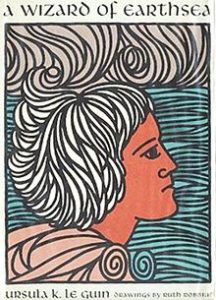 Within the past two weeks, The New Yorker and The Nation have published long features on Ursula K. Le Guin. They’re following the New York Times back in the summer. One wonders why the house organs of the chattering classes picked now. She’s 87, after all. She’s been published since the early sixties. It may be because the Library of America put out a collection of her work. That’s happened to extremely few living authors. Philip Roth is the only other one alive right now.
Within the past two weeks, The New Yorker and The Nation have published long features on Ursula K. Le Guin. They’re following the New York Times back in the summer. One wonders why the house organs of the chattering classes picked now. She’s 87, after all. She’s been published since the early sixties. It may be because the Library of America put out a collection of her work. That’s happened to extremely few living authors. Philip Roth is the only other one alive right now.
The magazines waited this long, I’m sure, because Le Guin’s body of work includes much imaginative fiction (or science fiction and fantasy, if you will). That may be, but The Left Hand of Darkness, A Wizard of Earthsea and The Lathe of Heaven are stamped with greatness. They are NOT stamped “literary,” however. Rather they carry the taint of genre. You can even read in the New Yorker’s subhead—”The literary mainstream once relegated her work to the margins. Then she transformed the mainstream”—as an attempt to cover tracks. If she did transform the mainstream, she started doing it waaaaay back in 1968. In our present, I watch as literary fiction continues to swallow itself, searching for, if I understand the purpose of the exercise, the meaning of meaning becoming the meaning. Not the story. Not life lived.
Our grandest publications have finally noticed Ursula in her ninth decade. Her books will be here long after the sum total of all the novels reviewed by the Times and The New Yorker and The Nation this year.

